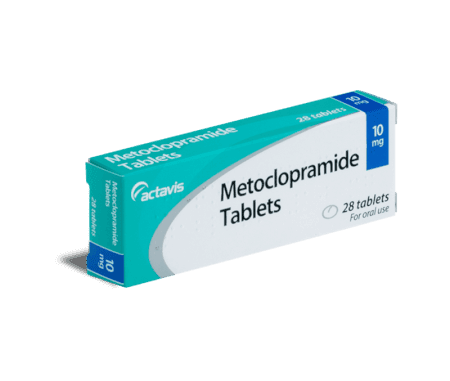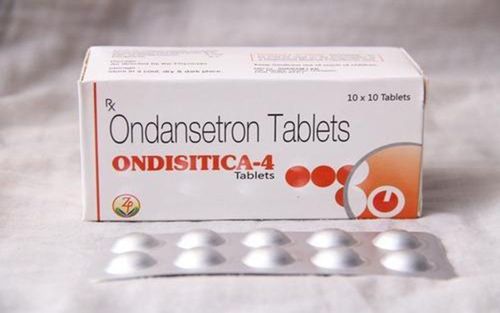This is an automatically translated article.
Prochlorperazine is used to relieve symptoms of certain neurological disorders including schizophrenia or mania. In low doses, prochlorperazine is also used as an antiemetic to relieve nausea and vomiting. Let's learn about the use of Prochlorperazine through the article below.1. Prochlorperazine drug effects
Prochlorperazine belongs to the group of antipsychotics and antiemetics. Prepared in the form of 5mg, 10mg tablets or 3mg oral dispersible tablets; syrup 5ng/5ml; injection drug 5ng/5ml; 5mg rectal suppository.Indicated in dizziness due to Meniere's syndrome, labyrinthitis and other causes, nausea and vomiting of any cause including those related to migraine.
Used for schizophrenia (especially in the chronic phase), acute mania, and as an adjunct to short-term anxiety management.
2. How to use Prochlorperazine
* Adults
| Chỉ định | Liều lượng |
| Phòng chống buồn nôn và nôn | 5 - 10 mg, 3 đến 4 lần mỗi ngày. |
| Điều trị buồn nôn và nôn |
- Khởi đầu 20mg, tiếp theo nếu cần, 10mg hai giờ sau đó. - Liều > 40mg mỗi ngày chỉ nên dùng trong những trường hợp kháng thuốc - Để kiểm soát buồn nôn và nôn nghiêm trọng phẫu thuật: 5–10 mg tiêm 15–30 phút trước khi khởi mê. Nếu cần, lặp lại liều một lần trước khi phẫu thuật. |
| Chứng chóng mặt và hội chứng Meniere |
Tăng 5 mg, nếu cần đến tổng cộng 30 mg mỗi ngày. Sau vài tuần, liều lượng có thể giảm dần đến 5 - 10 mg mỗi ngày. |
| Hỗ trợ trong điều trị ngắn hạn chứng lo âu | Ban đầu, 15 - 20 mg mỗi ngày chia làm nhiều lần nhưng có thể tăng lên nếu cần thiết đến tối đa 40 mg mỗi ngày chia làm nhiều lần. |
| Tâm thần phân liệt và các rối loạn tâm thần khác |
- Liều uống hàng ngày hiệu quả thông thường là 75-100mg mỗi ngày. Các bệnh nhân đáp ứng rất khác nhau. Lịch trình sau đây được đề xuất: - Ban đầu 12,5 mg x 2 lần / ngày trong 7 ngày, lượng hàng ngày sau đó tăng lên 12,5 mg sau khoảng 4 - 7 ngày cho đến khi đạt được phản ứng ưng ý. - Sau một số tuần với liều lượng hiệu quả, nên cố gắng giảm liều lượng này. - Tổng số lượng hàng ngày nhỏ như 50mg hoặc thậm chí 25mg đôi khi được cho là có hiệu quả. |
* Children
Mental disorders:
Children 2-12 years old (oral medication): Initially 2.5 mg x 2 or 3 times/day; The total dose should not exceed 10 mg on the first day. The dose of prochlorperazine may be increased but not to exceed 20 mg for children 2–5 years old and 25 mg for children 6–12 years old daily
Children under 12 years (intramuscular dose): 0.13 mg/ kg.
Treatment of nausea and vomiting:
| Cân nặng | Liều dùng hằng ngày |
| Dưới 9kg | Không dùng |
| 9,1kg –13,2kg | 2,5 mg, 1 đến 2 lần mỗi ngày |
| 13,6kg –17,7kg | 2,5 mg, 2 đến 3 lần mỗi ngày |
| 18,2kg –38,6kg | 2,5 mg, 3 lần mỗi ngày hoặc 5 mg, 2 lần mỗi ngày |
Oral drugs:
Children over 2 years old and weighing over 9kg (intramuscular dose): 0.13 mg/kg dose.
3. Contraindications of Prochlorperazine
Decreased liver function . Have or have a history of blood disorders. Epilepsy. Parkinson disease. Prostate enlargement. Narrow angle glaucoma. Pregnant. Do not use prochlorperazine in a coma or when there is a large amount of CNS depressant (alcohol, barbiturates, narcotics...) Children < 2 years old or weighing < 9 kg.
4. Notes when using Prochlorperazine
Elderly patients with dementia treated with antipsychotics have a higher risk of death. Tardive dyskinesia, a syndrome consisting of irreversible, involuntary movement disorders, may develop in patients treated with antipsychotics, particularly in the elderly.
Extrapyramidal symptoms secondary to prochlorperazine may be confused with CNS signs of some undiagnosed primary disease causing vomiting, for example, Reye's syndrome or encephalopathy. The use of prochlorperazine should be avoided in children and adolescents with signs and symptoms suggestive of Reye's syndrome.
Should be avoided in patients with liver or kidney dysfunction, Parkinson's disease, hypothyroidism, heart failure, phagocytosis, myasthenia gravis or prostatic hypertrophy, history of narrow-angle glaucoma or agranulocytosis seed sphere.
Mandatory discontinuation of treatment in case of unexplained fever, as this may be a sign of neuroleptic malignant syndrome (pallor, hyperthermia, autonomic dysfunction, altered consciousness) , muscle stiffness). Signs of autonomic dysfunction, such as sweating and arterial instability, are recognized as hyperthermia.
Phenothiazines with sedative effects may prolong the QT interval, increasing the risk of the onset of severe and potentially fatal (sudden death) ventricular arrhythmias. Avoid concomitant treatment of Prochlorperazine with other sedatives
Clinical trials have shown that prochlorperazine increases the risk of cerebrovascular accident, so it is very cautious when used in patients at risk of stroke.
Patients who have been diagnosed with diabetes or have risk factors for developing diabetes should have their blood glucose levels monitored during treatment with prochlorperazine.
Caution for pregnant women
There is not enough evidence on the safety of using prochlorperazine during pregnancy, so it should be avoided during pregnancy, only used when clearly needed. During the third trimester of pregnancy, there is a risk that the baby will be born with adverse events such as extrapyramidal reactions and/or withdrawal syndrome with symptoms such as agitation, increased/decreased muscle tone, tremor, somnolence, respiratory failure or digestive disorders. Note to nursing women
Prochlorperazine may be excreted in milk and breast-feeding must be discontinued during treatment.
Precautions when driving and operating machinery
Patients should be warned about drowsiness during the first days of treatment and should not drive or operate machinery
5. Side effects of the drug Prochlorperazine
Immune system disorders : Type I hypersensitivity reactions such as angioedema and urticaria. Blood and Lymphatic System Disorders: + Mild leukopenia occurs in 30% of patients with prolonged high doses.
+ Agranulocytosis may occur rarely: it is not dose related
Endocrine disorders : Hyperprolactinemia can lead to jaundice, gynecomastia, amenorrhea and impotence. Nervous system disorders: + Acute dystonia or dyskinesia, including visual crisis, usually transient in children and young adults, and usually occurs within the first 4 days of treatment or after increasing the dose.
+ Akathisia typically occurs after a large initial dose.
+ Parkinsonism is more common in adults and the elderly. It usually develops after several weeks or months of treatment. One or more of the following may be seen: tremor, rigidity, dyskinesia, or other features of Parkinson's disease. Usually just a tremor.
+ Tardive dyskinesia: If this occurs, it usually, but not necessarily, after high or prolonged use. It can even occur after stopping treatment. Therefore, it is advisable to keep the dosage as low as possible whenever possible.
+ Insomnia and agitation may occur.
+ Convulsion .
Eye Disorders: Changes in the eye and development of a lilac metallic-gray coloration in exposed skin have been reported in a few individuals, mainly women, who have been taking chlorpromazine continuously for long periods of time. long time (four to eight years). This can happen with Prochlorperazine.
Heart disorders: + Electrocardiogram changes including QT prolongation (as with other neuroleptics), depressed ST, changes in U and T waves.
+ Arrhythmias, including arrhythmias Ventricular and atrial arrhythmias, atrioventricular block, and ventricular tachycardia, which may lead to ventricular fibrillation or cardiac arrest, have been reported during treatment with the neuroleptic phenothiazines, which may be dose related. Pre-existing heart disease, old age, hypokalemia, and concomitant use of tricyclic antidepressants may predispose to the history.
Vascular disorders: A drop in blood pressure, which is usually postural, is common. Elderly or physically impaired subjects are particularly susceptible to the disease; it is more likely to occur after intramuscular injection. + Cases of venous thromboembolism, including cases of pulmonary embolism and cases of deep vein thrombosis, have been reported with antipsychotics - Frequency unknown
Gastrointestinal disorders: Possible Dry mouth . Metabolic and nutritional disorders: + Hyponatremia
+ Syndrome of inappropriate antidiuretic hormone secretion (SIADH).
- Respiratory, thoracic and mediastinal disorders:
+ Respiratory depression may occur in susceptible patients.
+ Nasal congestion may occur.
Hepatobiliary disorders: Jaundice, often transient, occurs in a very small percentage of patients receiving neuroleptics. Treatment should be discontinued in the event of development of jaundice Skin and subcutaneous tissue disorders: + Skin sensitization by contact may occur rarely in preparations that regularly handle certain phenothiazines.
+ Skin rashes of various types can also be seen in patients treated with the drug.
+ Patients taking high doses should be warned that they may be photosensitive in the sun and should avoid direct sun exposure.
General disorders and conditions: + Neuroleptic malignant syndrome (hyperthermia, stiffness, autonomic dysfunction and altered consciousness) may occur with any neuroleptic. any.
+ Glucose intolerance, hyperglycemia
Please dial HOTLINE for more information or register for an appointment HERE. Download MyVinmec app to make appointments faster and to manage your bookings easily.













